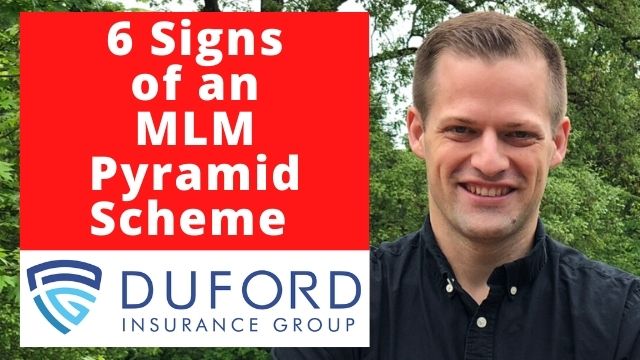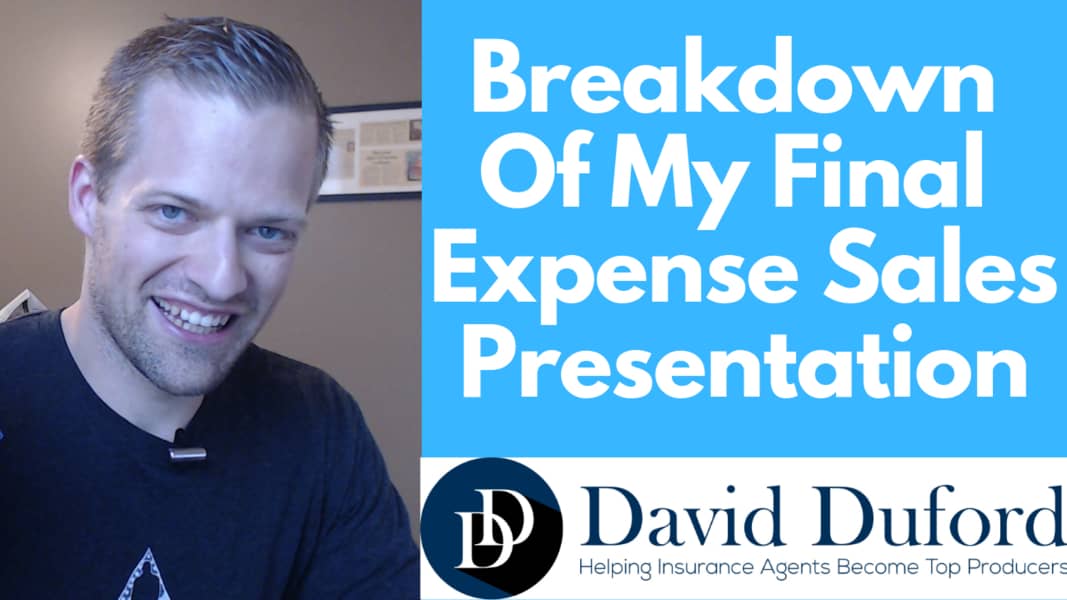Are you interested in selling final expense insurance successfully?
Are you frustrated with your current sales presentation, and NOT getting the results you’d like?
While you can SOMETIMES blame poor sales results on the final expense leads you’re working, many times you’re NOT getting results because your agency taught you a cheesy or borderline unethical sales presentation process that you’d rather NOT do.
Wouldn’t you prefer a straight-up, no BS presentation that gets results AND lets you sleep at night with a sound conscious?
If any of the above describes you then you’re at the right article!
I’m going to detail how my 4-part final expense sales presentation strategy works, and why I think it’s great in converting high-quality business without resorting to cheesy sales tactics or high pressure.
Let’s begin!
Quick Navigation Article Links
Breakdown Of My Final Expense Presentation
Now that you understand the underlying principles of my final expense sales presentation, let’s take a closer look into how each phase works.
Step 1: Introduction and Rapport
Introduction and rapport in a sales process is very important.
You want to break the ice with your prospect.
You don’t need to make him your best friend, but you do need to get him to understand that you’re there to help and to open his mind to you selling him.
The other half of this is introducing yourself, which is much more scripted and well-rehearsed positioning statements.
This tells your prospect who you are, why you’re there, and why it’s important for him to listen.
Step 2: Pre-Qualification & Fact-Finding
I harp on this stage endlessly because pre-qualification is the most important aspect to selling final expense.
This is where the Socratic approach really comes into play. I want to get into the mind of the person sitting across the table from me.
I want to know their reason for requesting the information via the lead. I want to know what they’re expecting from a policy, and I want to know why all this is important to them.
This brings out emotion and logic to justify such emotion, and it allows the prospect to give me the ammo necessary to make the sale.
They’re essentially telling me how I can sell them if there’s a sale to be made.
Once I know the bedrock foundations of why they want to do what they want to do, then I ask questions about the bank, health and budget.
I want to know if they can qualify, if they can be drafted, and what their budget range is.
Again, this is a basic view, but I want to know all this stuff before I get any further.
I don’t want to proceed in a sales call before I know that I have the fundamentals in place so I don’t waste my time talking to an unqualified prospect (somebody who isn’t going to or can’t buy).
Step 3: Presentation of the Product
The way that we build value in presenting at this point is by comparing what we do to the others.
There’s no better way to position ourselves than saying what we do versus what they do and comparing and contrasting why our deal is better than theirs.
This is important because we want them to understand why ours is better.
This is the phase where we compare all of our competition and show their damaging admissions and damaging issues that they won’t tell you about.
Luckily, this is one of the easiest parts of the presentation because you wouldn’t do it if they weren’t already pre-qualified, so you know you’ve got a pretty good chance of selling.
By comparing and contrasting, the odds are pretty high that they’re going to be interested in buying if you can prove to them that what you can do is actually better than the alternative.
Step 4: Closing and Handling Objections
I emphasize closing because there are probably very few objections to handle if you properly completed the earlier phases/steps.
The closing is not very difficult. It’s just a presentation of the product, a reiteration of why it’s a good deal, and then a presentation of the prices, closing with a request of ‘which one works better for you?’
That’s it.
No more miraculous 5-step closing progressions, or 20 different closes to remember.
You don’t have to do that with this kind of product and especially with this kind of approach.
Handling Objections
As far as the objections go, hearing objections usually mean you didn’t do a good job pre-qualifying.
There’s a lot of sales gurus out there that think you’ve got to know 20 different objection rebuttals, and you’ve got to have all these things scripted and some sort of smart-sounding approach to handling people who have resistance.
The truth is that all of this is bullshit. You don’t need to know all sorts of objections.
You need to know 1 or 2 REALLY well. Better yet, you need to learn how to effectively pre-qualify.
Had you done that properly, then you wouldn’t have had objections in the first place!
Final Expense Is Simple
Before we break down each phase of the final expense presentation, understand this.
Selling final expense SHOULD be a simple ordeal. You shouldn’t feel you have to resort to chicanery or pressure to make the sale.
Unlike most life insurance sales methods, my method focuses on utilizing the classical “Socratic Method” approach to persuading.
Socratic Method Of Selling
In a nutshell, the Socratic Method focuses on a question-based approach to help the prospect more fully understand their reasons why buying final expense is important.
Just as important, the approach allows prospects to draw their own conclusions about the importance of owning final expense.
Why do I like this approach to selling?
First, I do not force my beliefs upon my prospects.
I educate my prospects on final expense, ask open-ended questions, and allow the prospect to make their own mind up.
The results are more enthusiastic buyers that actually BELIEVE in owning final expense for their own reasons and not mine.
This is in contrast to an aggressive and authoritative sales methodology utilizing pressure and guilt.
While this method works for one-off sales like car and vacuum sales, the problem with this method in selling life insurance is two-fold: fixed-income and long-term ownership.
Fixed Income
Many of our buyers come from a background of poor money management.
They’re not the best at holding onto money, and many have a history of buying things they could not afford.
If you are especially persuasive and pushy, you’ll likely extract more premium dollars in your final expense presentation.
Just prepare yourself with a higher-than-normal lapse rate and charge back problems.
I remember one agent in East Tennessee that had the highest personal production of final expense in his region.
And because he used an aggressive car sales methodology on his final expense prospects, he also had the highest chargeback rate.
He quit the insurance business and went back to car sales within his first year.
Bottom line, our prospects are on a fixed income. Disrespect that to your detriment
Long-Term Ownership
Unlike a strategy to sell a singular product, you are on the hook for advance commission for 9 months when you sell a final expense policy.
While your prospect may buy today under pressure, what’s to stop her from dropping it tomorrow or sometime over the next month?
Applying pressure to the sales process is a tactic providing a temporary advantage.
As soon as you leave, the tactic loses effectiveness, and the likelihood is higher your prospect will dump the policy if it’s just too expensive.
Instead, I teach agents in my agency to sell based on making SURE the policy sticks on the books.
I go so far as to tell my prospects that buying my policy then dropping it is a WASTE OF MONEY!
Therefore, think long-term. The policy that stays, is the policy that pays! Not just for you, but for your client, too.
How To Become Diplomatic
As I conduct my final expense sales presentation, I am very diplomatic.
I am always pleasant with my clients.
And in most situations I work through my presentation on a permission basis.
This is the opposite of an assumption-based presentation. There’s nothing I hate more than some salespeople ASS-umming throughout his entire sales presentation.
It shows me he doesn’t care about my thoughts on the subject matter, and has a canned script he’s working through.
Now, I WILL use assumptive phrases in certain parts of the presentation, chiefly at the close.
But what I do NOT do is use the “yes train, ” or the “don’t you agree” smarmy, salesy talk so common in traditional sales models.
The diplomatic approach I employ relies on questions, but also relies on a permission-based approach.
The diplomatic approach is educational in nature. We educate the prospect on what it is that we do, and we show them how through example and through honest dialogue.
The outcome to a Socratic diplomatic approach is people are more convinced that what they’re buying is a good deal for them.
They make the decision and they appreciate the process because it is a cumulative and mutually beneficial process involving both sides.
Conclusion
These are the 4 steps to a final expense insurance sales presentation.
Understand this is a basic overview. There’s more complexity in language patterns, the scripting, the selection of verbiage, pacing, timing, etc.
Much of this is learned over time and through experience, in addition to partnering with myself and my team.
Want to learn more about joining my agency to sell final expense, annuities, or Medicare Advantage?
Go here and review the free information to decide if my program is right for you. And make sure to review my Agent Success Stories, too.
Thanks for reading =).


January 03, 2023

January 03, 2023

January 03, 2023
